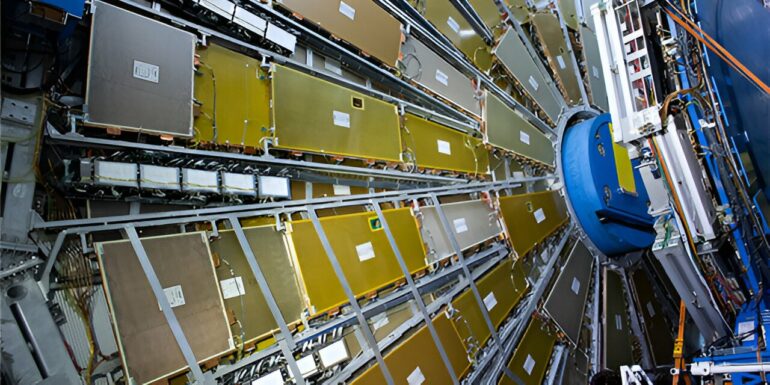Professors Andreas Crivellin of the University of Zurich and Bruce Mellado of the University of the Witwatersrand and iThemba LABS in South Africa have documented deviations in the way particles interact. These deviations are inconsistent in comparison to the way they are expected to break up, and point to the existence of new bosons.
Among these deviations are the multi-lepton anomalies.
“From the multi-lepton anomalies one can predict the existence of a new Higgs-like boson, somewhat heavier than the one discovered in 2012. This one would be produced because of the decay of an even heavier boson,” says Mellado. Their observations were published in Nature Reviews Physics.
Researchers in the field of particle physics study the make-up of fundamental particles such as protons and neutrons and leptons, to establish what matter the universe is made of, and how forces work in nature.
Leptons are elementary particles—such as electrons—that can combine with other particles to form composite particles such as atoms. Researchers study the decay (their transformation from a higher mass to a lower mass) of leptons to examine the make-up of particles. It was through studies such as these that the Higgs boson was discovered at the LHC in Switzerland.
The Higgs boson was already predicted in 1964. However, it was only on July 4, 2012, that its discovery was announced by the experiments of the LHC at CERN in Geneva, Switzerland. The discovery—in which South African scientists participated—led to the Nobel Prize in Physics being awarded to the two theoretical physicists, Francois Englert and Peter Higgs in 2013.
“The Higgs boson was the last missing fundamental particle of the Standard Model. Its discovery was a turning point for physics for two reasons. Firstly, it demonstrates the mechanism of how fundamental particles acquire mass in nature, thus opening the door to understanding how most of the matter in the universe, which is unknown to us, is generated, and secondly, it opens a window of opportunity for other groundbreaking discoveries that will shed light on how the Standard Model breaks down,” says Mellado.
The Standard Model of particle physics is the mathematical description of the fundamental constituents and interactions of matter. While it is the accepted theory encapsulating our current state-of-the-art knowledge in particle physics, it is incomplete as it is unable to describe many glaring phenomena in nature.
Crivellin and Mellado’s article describes deviations in the decay of multi-lepton particles in the LHC, compared to how they should behave according to the Standard Model. These deviations, or anomalies, constitute excesses in the production of particles called electrons and its heavy cousin, the muon, on top of the predictions from the Standard Model.
“An anomaly is something that stands out as unusual or different from what is normal or expected. In this case, this is a deviation from the Standard Model of Particle physics. Anomalies can be important because they often signal that something unexpected or significant has happened,” says Crivellin.
The discovery of a Higgs boson, as well as other major discoveries in particle physics, were preceded by indirect evidence, such as deviations from the predictions of the currently prevailing theory. These “anomalies” constitute early signs or hints that a direct discovery might happen soon.
“These anomalies, as described in our article, are consistent with new bosons,” says Crivellin.
The discovery of new bosons would be ground-breaking.
“This could answer why our current understanding of the matter is not working and would open the door to observing new forces in nature.”
The work that led to the observation of the multi-lepton anomalies was initiated at the International Workshop Discovery Physics at the LHC that took place at Kruger Park in December 2014. Professor Alan Cornell and Dr. Mukesh Kumar led the theoretical efforts that later crystallized in a publication in the European Journal of Physics C.
Crivellin and Mellado’s article is dedicated to the memory of the late Professor Daniel Adams who served many years at the SA Department of Science and Innovation and was instrumental in the establishment of the SA-CERN program and Particle Physics in South Africa.
More information:
Andreas Crivellin et al, Anomalies in particle physics and their implications for physics beyond the standard model, Nature Reviews Physics (2024). DOI: 10.1038/s42254-024-00703-6
Citation:
Deviations in particle interactions point to the existence of new bosons (2024, August 22)



